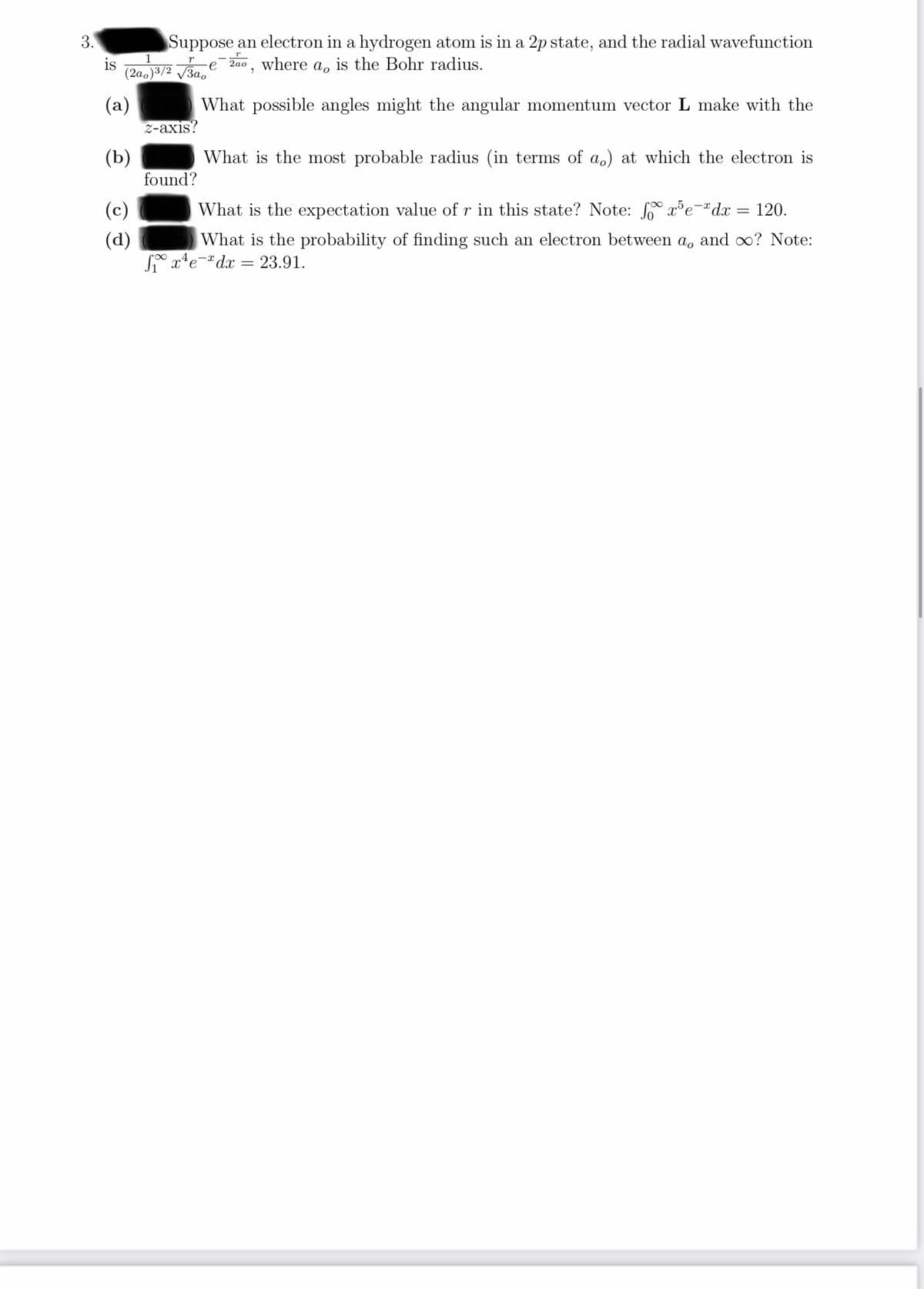3. Suppose an electron in a hydrogen atom is in a 2p state, and the radial wavefunction is (2a,)3/2 /3ae Zao, where a, is the Bohr radius. (a) 2-axis? What possible angles might the angular momentum vector L make with the (b) found? What is the most probable radius (in terms of ao) at which the electron is (c) What is the expectation value of r in this state? Note: f r°e-*dx = 120.
3. Suppose an electron in a hydrogen atom is in a 2p state, and the radial wavefunction is (2a,)3/2 /3ae Zao, where a, is the Bohr radius. (a) 2-axis? What possible angles might the angular momentum vector L make with the (b) found? What is the most probable radius (in terms of ao) at which the electron is (c) What is the expectation value of r in this state? Note: f r°e-*dx = 120.
Related questions
Question
100%

Transcribed Image Text:3.
Suppose an electron in a hydrogen atom is in a 2p state, and the radial wavefunction
e 2ao, where a, is the Bohr radius.
1
is
(2ао)3/2 VЗа.
(а)
What possible angles might the angular momentum vector L make with the
Z-axis?
(b)
What is the most probable radius (in terms of a.) at which the electron is
found?
(c)
What is the expectation value of r in this state? Note: S xe-"dx
120.
(d)
What is the probability of finding such an electron between a, and ∞? Note:
° x*e-"dx = 23.91.
Expert Solution
This question has been solved!
Explore an expertly crafted, step-by-step solution for a thorough understanding of key concepts.
Step by step
Solved in 5 steps with 4 images
